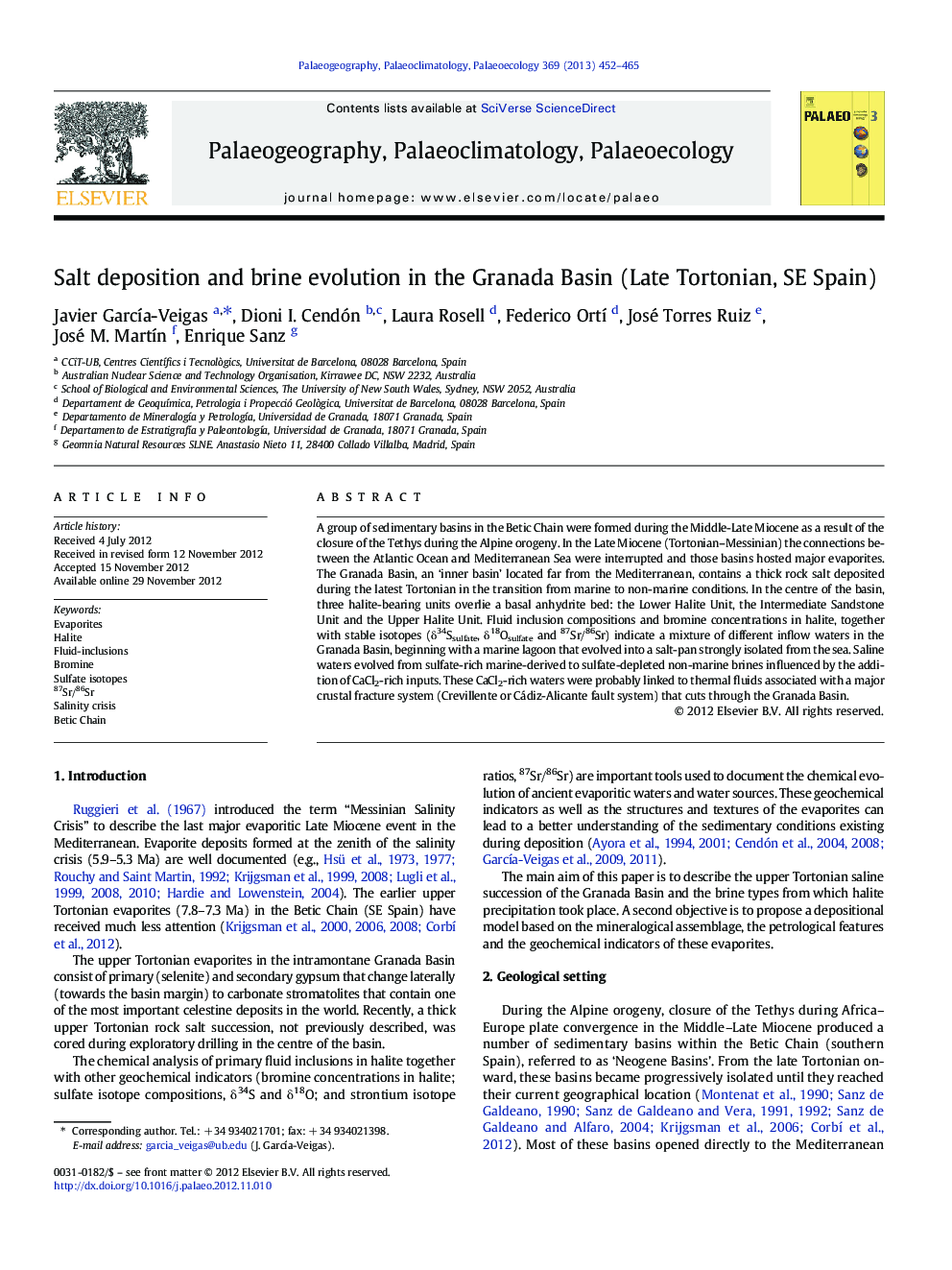| Article ID | Journal | Published Year | Pages | File Type |
|---|---|---|---|---|
| 4466716 | Palaeogeography, Palaeoclimatology, Palaeoecology | 2013 | 14 Pages |
A group of sedimentary basins in the Betic Chain were formed during the Middle-Late Miocene as a result of the closure of the Tethys during the Alpine orogeny. In the Late Miocene (Tortonian–Messinian) the connections between the Atlantic Ocean and Mediterranean Sea were interrupted and those basins hosted major evaporites. The Granada Basin, an ‘inner basin’ located far from the Mediterranean, contains a thick rock salt deposited during the latest Tortonian in the transition from marine to non-marine conditions. In the centre of the basin, three halite-bearing units overlie a basal anhydrite bed: the Lower Halite Unit, the Intermediate Sandstone Unit and the Upper Halite Unit. Fluid inclusion compositions and bromine concentrations in halite, together with stable isotopes (δ34Ssulfate, δ18Osulfate and 87Sr/86Sr) indicate a mixture of different inflow waters in the Granada Basin, beginning with a marine lagoon that evolved into a salt-pan strongly isolated from the sea. Saline waters evolved from sulfate-rich marine-derived to sulfate-depleted non-marine brines influenced by the addition of CaCl2-rich inputs. These CaCl2-rich waters were probably linked to thermal fluids associated with a major crustal fracture system (Crevillente or Cádiz-Alicante fault system) that cuts through the Granada Basin.
► The Neogene Granada Basin (Betic Chain) is related to the Tethyan closure. ► A Late Tortonian saline succession occurs in the Granada Basin. ► Saline succession evolves from a marine lagoon to a salt-pan. ► Brine-inclusion variations resulted from mixing with a CaCl2-rich water source. ► Hydrothermal contributions could be related to the Cádiz-Alicante crustal fault.
